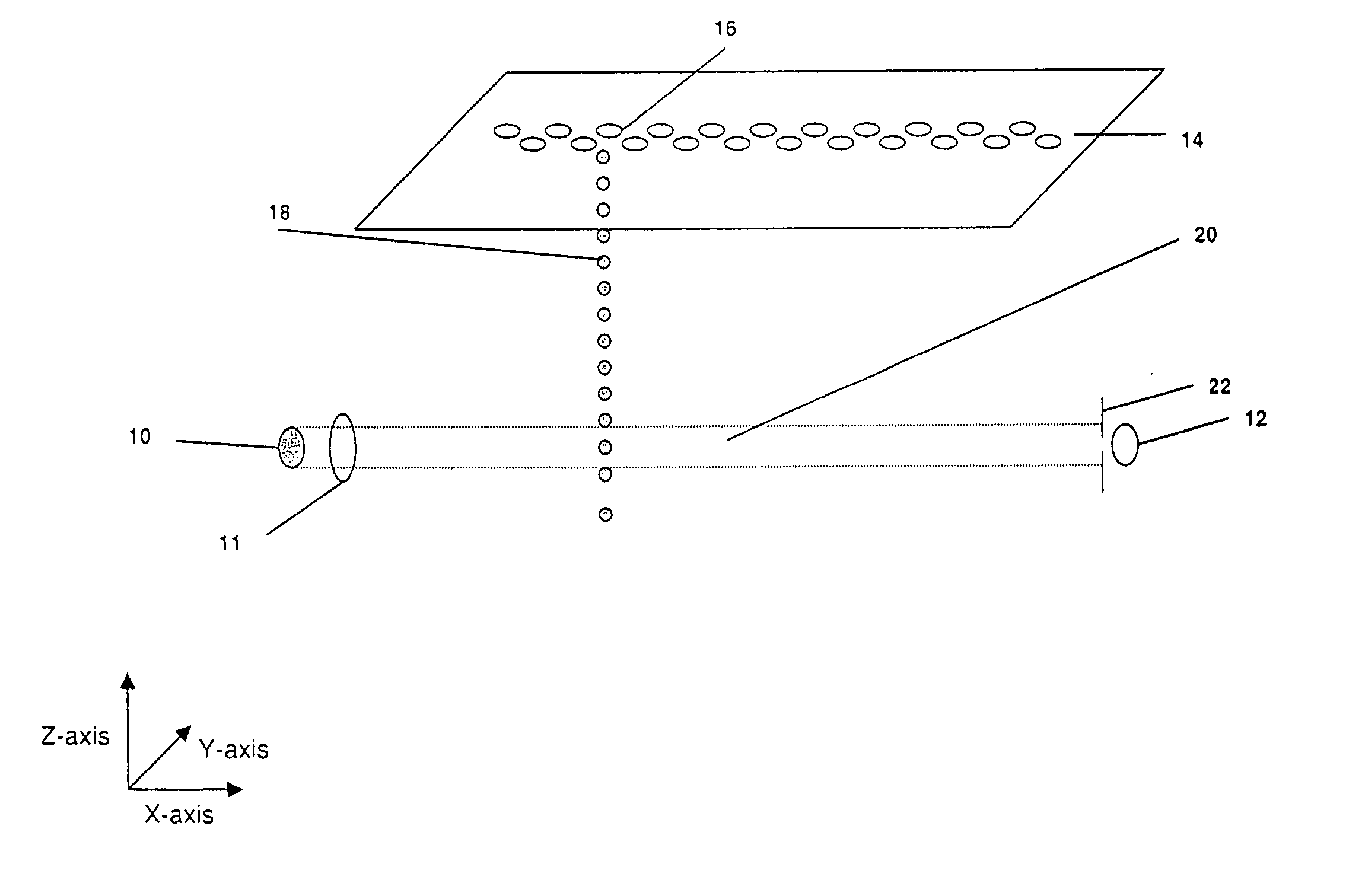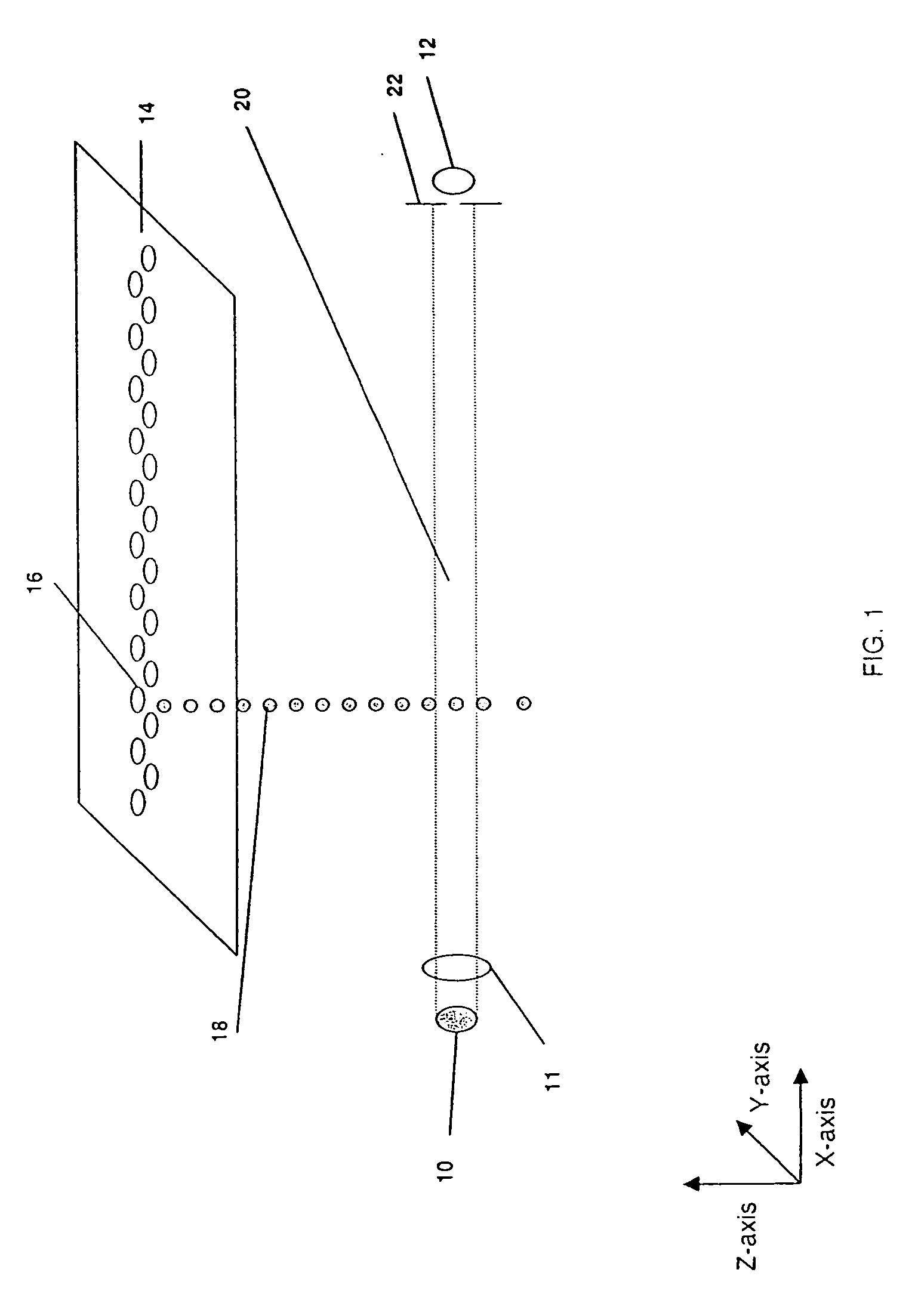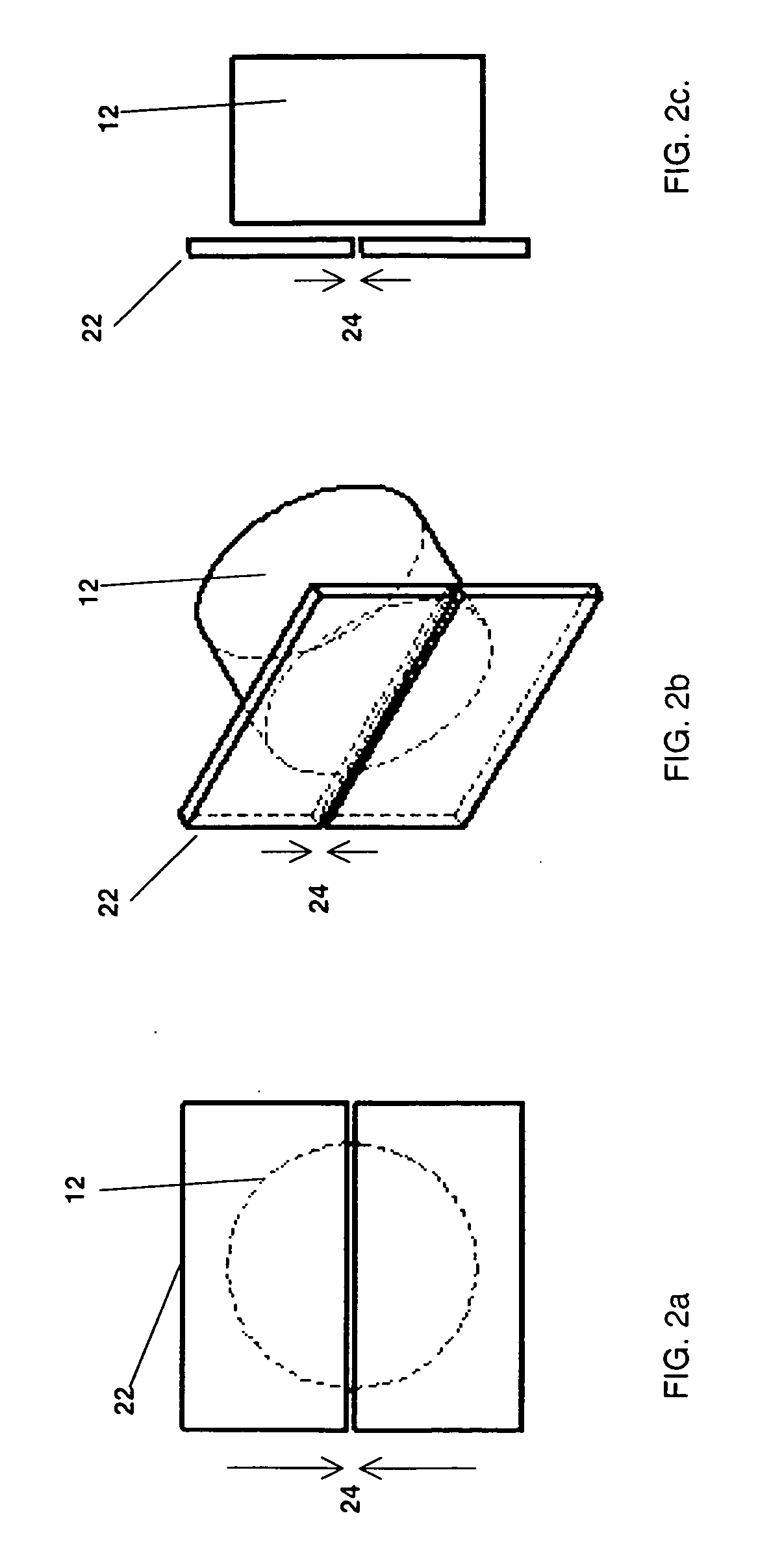Apparatus and method for detection of liquid droplets
a technology of liquid droplets and apparatus, which is applied in the direction of printing, other printing apparatus, etc., can solve the problems of insufficient detection accuracy, inability to detect liquid droplets, etc., and achieve the effect of increasing the optical signal-to-noise ratio of the detector
- Summary
- Abstract
- Description
- Claims
- Application Information
AI Technical Summary
Benefits of technology
Problems solved by technology
Method used
Image
Examples
Embodiment Construction
[0028] Inkjet print engines enable printing via ejection of droplets of ink from ejection ports or nozzles onto a desired receiver. In order to maximize printing efficiency and image quality, it is critical to assess the performance of these ejection ports. This can be achieved by monitoring the characteristics of the ejected drops. For example, the absence of a drop could indicate a failure to fire the ejector or need for servicing. Another example that could indicate poor performance of the particular ejector is low velocity for an ejected drop.
[0029] The present invention employs optical drop detection. A path of light, also referred to as the detection zone, is produced with a suitable emitter or light source and directed to impinge upon a detector. A row of ejector ports is aligned substantially parallel to this path of light such that the ejected drops pass through and intercept the path of light. The momentary partial obstruction of light is detected, thereby achieving detec...
PUM
 Login to View More
Login to View More Abstract
Description
Claims
Application Information
 Login to View More
Login to View More - R&D
- Intellectual Property
- Life Sciences
- Materials
- Tech Scout
- Unparalleled Data Quality
- Higher Quality Content
- 60% Fewer Hallucinations
Browse by: Latest US Patents, China's latest patents, Technical Efficacy Thesaurus, Application Domain, Technology Topic, Popular Technical Reports.
© 2025 PatSnap. All rights reserved.Legal|Privacy policy|Modern Slavery Act Transparency Statement|Sitemap|About US| Contact US: help@patsnap.com



